WASHINGTON – It was a knife-twist that originated in Florida, but it was felt across the Atlantic.
U.S. Secretary of State Mike Pompeo, appearing Monday on Fox News via a live feed from the Veterans of Foreign Wars convention in Orlando, was asked by anchor Brian Kilmeade what the United States’ role was in helping the United Kingdom get its tanker back, which was seized by Iran in a tit-for-tat raid at sea after the U.K. seized an Iranian tanker suspected of smuggling oil to Syria.
"The responsibility ... falls to the United Kingdom to take care of their ships," Pompeo said.
America’s top diplomat went on to say that the U.S. had a role in policing the Strait of Hormuz, but that “the world has a big role in this, too, to keep these sea lanes open,” he continued. “I’m convinced we’ll do that.”
It was a loaded answer, and the subtext wasn’t missed in the United Kingdom: The U.K. has the responsibility to protect its own ships, but doesn’t have the Navy it needs to do it.
RELATED
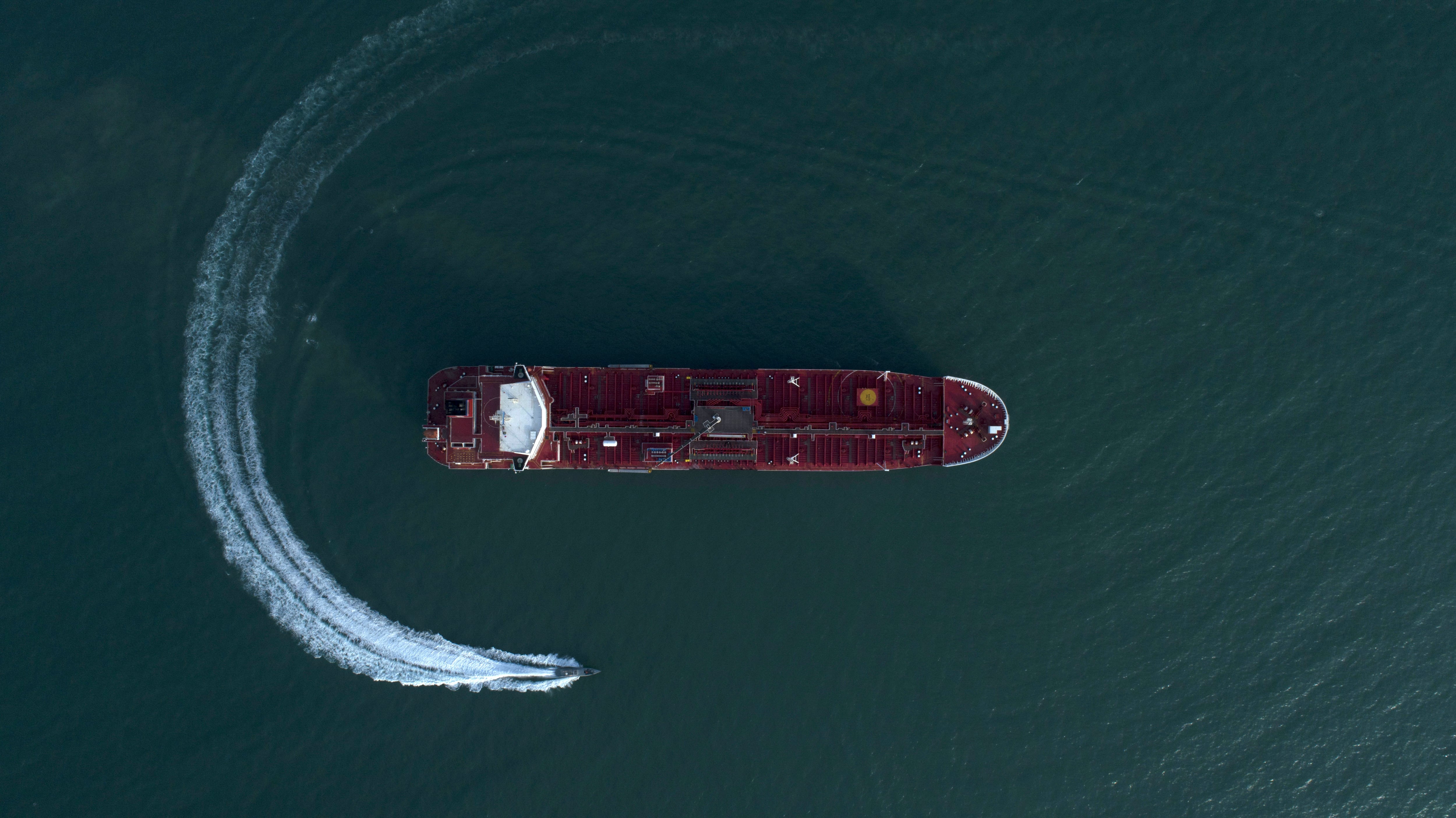
Like the U.S. Navy, the Royal Navy has seen a decline in the size of its fleet since the 1980s, only in the case of the Royal Navy, it had fewer ships to lose to start with. The U.S. Navy has struggled to maintain its global commitments with a fleet of 290 ships, and it has seen a 52 percent decrease from its 1987 peak of 594 ships. The U.S. Navy is today pursuing a goal of 355 ships.
But during roughly the same time period the Royal Navy has lost more than 40 percent of its fleet, that stood at more than 130 ships. Today’s Royal Navy numbers fewer than 80 ships.
Both fleets made similar decisions to focus on high-end capabilities to the detriment of good-old fashioned capacity, trusting to allies and partners to help make up shortfalls where necessary. But the U.S. is tied up on other missions, is renewing its focus on fighting big powers like Russia and China, and is hoping against hope to get itself disentangled from Middle East conflicts. So Iran’s seizure of a British tanker, with no Royal Navy assets close enough to stop it, has exposed the shortcomings of a capability over capacity trades that Britain made since the end of the Cold War, experts said.
“About $88 trillion of global [gross domestic product] is being borne by seaborne assets, and they are being protected by fewer than 1,000 gray hulls in the world – talking about the United States and its allies and partners,” said Jerry Hendrix, a retired Navy captain and analyst with Telemus Group. “And those who would align themselves against us – Iran, Russia, China – they are choosing to interpret the global international system differently.
“The British pulled back in order to consolidate their resources on the high end. And now they have tankers that are being taken at sea. So you can't have it both ways. That's why I've been arguing for a balance between war-winning capabilities and peace-preserving capacity.”
The draw-down was a deliberate strategy that bet a lot on the U.K.’s relationship with the United States, said Bryan Clark, a retired U.S. Navy submarine officer and analyst with the Center for Strategic and Budgetary Assessments.
“The UK’s strategy, if you look at their most recent [Strategic Defense and Security Review], they say is that ‘Our job is to plug into a U.S.-led force in support of some larger operation, whether that is against a great power or against someone like a Libya,’” Clark said.
“And they’ve designed a Navy and a force that’s like a small version of the U.S. Military, with the idea that they plug that in to the US military. And that led them to pursue those two aircraft carriers, submarines, and if you look on the ground, they’ve got some really high-end units, but they’re really small. They are designed to plug in.”
The primary focus for the Royal Navy is to build its two new aircraft carriers, along with the escorts necessary to defend it, to augment a US force in a large-scale operation. The U.K. is also building a new ballistic missile sub to contribute to deterrence patrols. That strategy, however, leaves little for holding down presence in places where the U.K. has national security interests, Clark continued.
“It doesn’t leave a lot of money left over for the low-end capabilities you’d need for maritime security patrol, for example," he said. "They’re not designing a global, full-spectrum military. They’re designing a military that can plug in with the US for large-scale operations.”
That strategy works, however, only if the U.S. is willing to commit forces to help protect British interests. But with the advent of the Trump administration and its “America First” policies that demand a greater share of the burden from allies, the faith that America will always be there may no longer be well founded.
RELATED
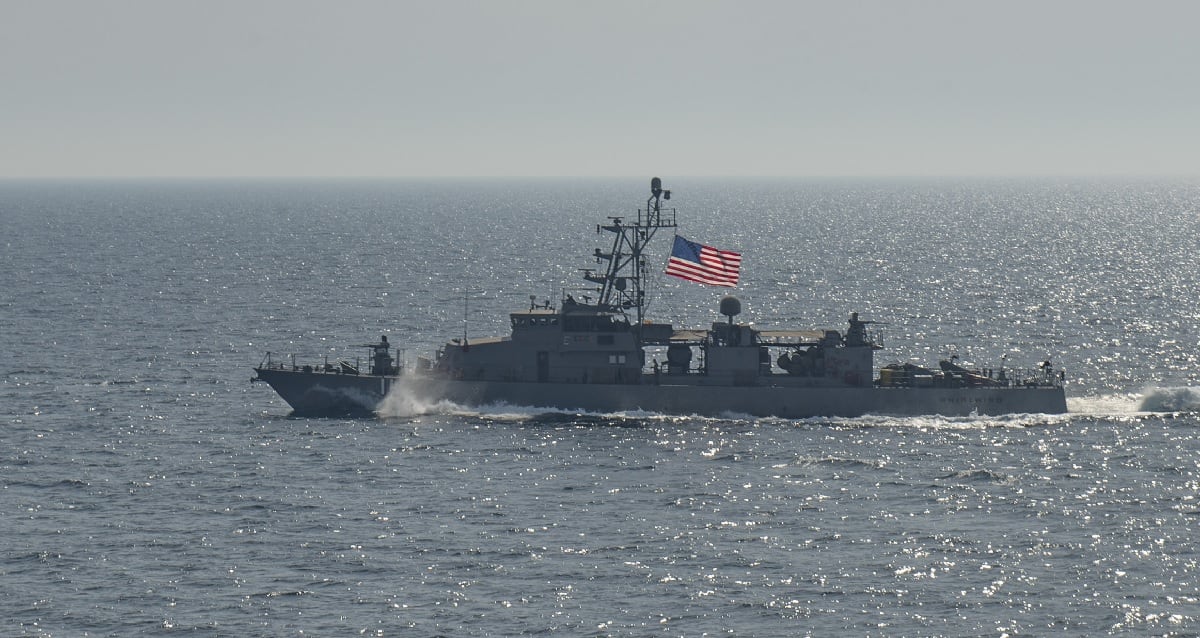
‘Too Small’
Nobody missed the point when Pompeo told Fox News that the U.K. had to look after its own ships.
Immediately when the news broke, U.K. national security Twitter became inundated with grumpy and sarcastic tweets about the “special relationship” between the U.S. and U.K.
But they needn’t have been surprised.
In June, the Pentagon’s number two officer, Air Force Gen. Paul Selva, told a group of reporters that the rising threat to shipping in the Strait of Hormuz was not solely the responsibility of the United States.
“I think there is a military role in defending freedom of navigation,” Selva said. "The question will be to what extent the international community is behind that effort.
“I’m not suggesting for a moment that we don’t have a significant role to play in that space. But it will require an international consensus before force is used with one specific caveat: If the Iranians come after U.S. citizens, U.S. assets or U.S. military, we reserve the right to respond with a military action. They need to know that, it needs to be very clear.”
So far the U.S. offered to provide intelligence for an escort mission but has also said it will only escort U.S. shipping through the straits.

But that the Royal Navy isn’t large enough to hold down such a mission to protect its ships on its own is something even the Ministry of Defense leadership openly acknowledged this week.
“We have three of four vessels going through 100 nautical miles of waterway every single day,” said Tobias Ellwood, the MoD’s personnel and veterans’ chief, in an interview Sunday on Skye News. “It’s not just us, it’s the international community there is well. But it is impossible for us to escort each individual vessel.
“If we want to continue playing a role on the international stage, given that threats are changing, all happening beneath the threshold of all-out war, then we must invest more in our defense, including in the Royal Navy. Our Royal Navy is too small to manage our interests across the globe.”
Little Help?
The talking points from US about the UK needing to protect their own ships have been consistent, even as Pompeo and Joint Chiefs Chairman Gen. Joe Dunford have tried with middling to no success to piece together a coalition of willing partners to patrol the straits, being dubbed “Operation Sentinel.”
The U.K. has had its own issues finding a little help from their friends. A United Kingdom-led effort to organize a European mission to defend shipping in the Gulf has so-far fallen on deaf ears, with both France and Germany demurring when asked to pony up some assets for the mission, according to a Wednesday report in the Financial Times. Both Germany and France have cited concerns about escalating the situation.
So far, both efforts have been a relative debacle.
The U.S. position to date is in line not just with the Pentagon’s messaging, but with the Trump administration’s America First policies.
“It seems consistent with this idea that we want NATO to take responsibility for its own defense,” said Clark, the CSBA analyst. “In that view, this is an example of a country with far-flung interests that has failed to invest adequately in their defense. It fits perfectly in with that argument.
“It’s consistent also with Mike Pompeo’s effort on Operation Sentinel: It’s a way to pressure other countries like Britain and Japan and even potentially China and India to fork over some capabilities to help defend their shipping.”
RELATED
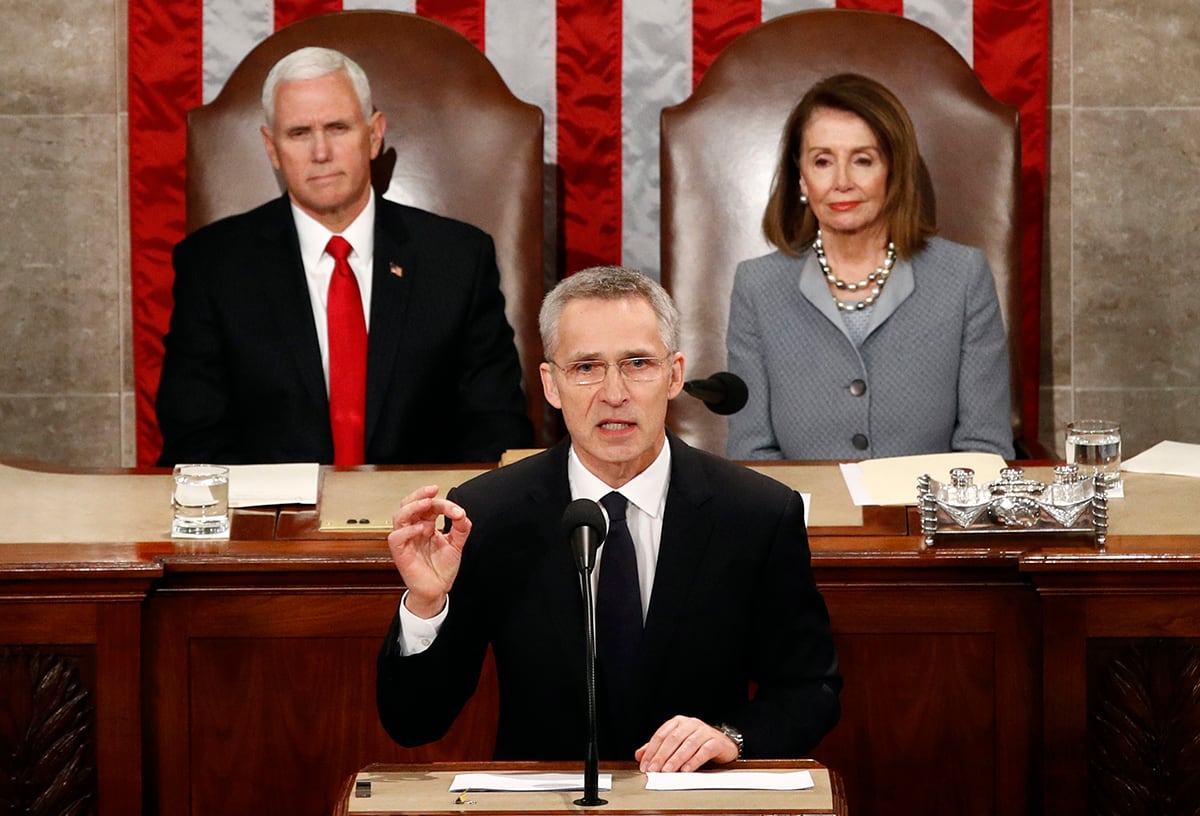
But neither should the emphasis on burden sharing from the Trump administration come as a surprise. For years, U.S. defense secretaries have harped on NATO countries to meet their obligation. In a 2011 speech by then-Defense Secretary Bob Gates in Brussels, he castigated European nations for allowing the U.S. and a select few other nations take on too much of the responsibility.
“In the past, I’ve worried openly about NATO turning into a two-tiered alliance: Between members who specialize in ‘soft’ humanitarian, development, peacekeeping, and talking tasks, and those conducting the ‘hard’ combat missions,” Gates said. “Between those willing and able to pay the price and bear the burdens of alliance commitments, and those who enjoy the benefits of NATO membership – be they security guarantees or headquarters billets – but don’t want to share the risks and the costs. This is no longer a hypothetical worry. We are there today. And it is unacceptable.
“Part of this predicament stems from a lack of will, much of it from a lack of resources in an era of austerity. For all but a handful of allies, defense budgets – in absolute terms, as a share of economic output – have been chronically starved for adequate funding for a long time, with the shortfalls compounding on themselves each year.”

The U.S. reluctance to lead the policing effort in the Gulf may not just be about telling other counties to police their own, however. Part of the U.S. reticence to lead an armed coalition may be an effort to deescalate the situation with Iran, said Hans Binnendijk, a transatlantic security expert with The Atlantic Council.
“I think Trump is unhappy that [National Security Advisor John] Bolton and others have brought the U.S. this close to war with Iran,” he said. “He is trying to deescalate as events threaten to escalate.”
However, according to Clark, if the U.S. Navy was in a position to help a British tanker in distress and deter a boarding, it is highly unlikely that the ship would just stand aside.
“In extremis, I don’t see a U.S. Navy ship commander saying, ‘Well I didn’t get orders to defend that ship so I’m going to let that guy burn,’” Clark said. “I don’t see that happening. I think this is more about keeping the pressure on the Brits [to invest in their security] than what you’d actually do in an operational scenario.”
Where are the Frigates?
Of the 55 ships the Royal Navy has shed from its force structure in the decades since the Falklands War in the early 1980s, half of those are frigates – generally ships that perform low-end missions such as security cooperation with smaller nations, presence and maritime security, which includes escorting tankers. This saves larger, more capable ships for high-end missions such as air defense of high-value units such as an aircraft carrier.
But what constitutes a frigate today is much different from what was considered a frigate in the 1980s. For example, the Type 21 frigate, which ran about £28 million in 1978 – a cost of about £165 today, or $205 million today – would barely scratch the surface of paying for ships that are considered frigates today.

Today, the U.S. littoral combat ship, famously considered under-armed and ill-equipped for modern naval combat, costs about $360 million. And the ships competing for the U.S. frigate program, the FFG(X), includes several European frigate designs and all are struggling to meet the Navy’s goal of just under $1 billion per hull.
That’s a global trend that makes mass-producing “frigates” to perform maritime security operations and other low-end missions more costly than ever.
“Today, European nations are producing ‘frigates’ that just recently you or I would call ‘destroyers,’ based on size and, somewhat, on capability,” said Steve Wills, an analyst and retired naval officer with CNA. “Those ships want to joint up with a coalition, be part of coalitions with U.S. forces – they’re bigger, longer-range ships. The Type 23 that they’re employing right now are perfect for that kind of mission. So, they’ve gone in that direction, but they have much less.”
But the need for a less expensive frigate is one that the U.K. has recognized and is already moving out on, but not without some controversy. The Royal Navy is pursuing a budget frigate, the Type 31e, and recently awarded design contracts to BAE, Atlas Elektronik and Babcock. The program aims to get five new frigates for £1.25 billion, a low number that the Royal Navy hopes will be able to boost its fleet numbers while keeping the costs under control.
RELATED
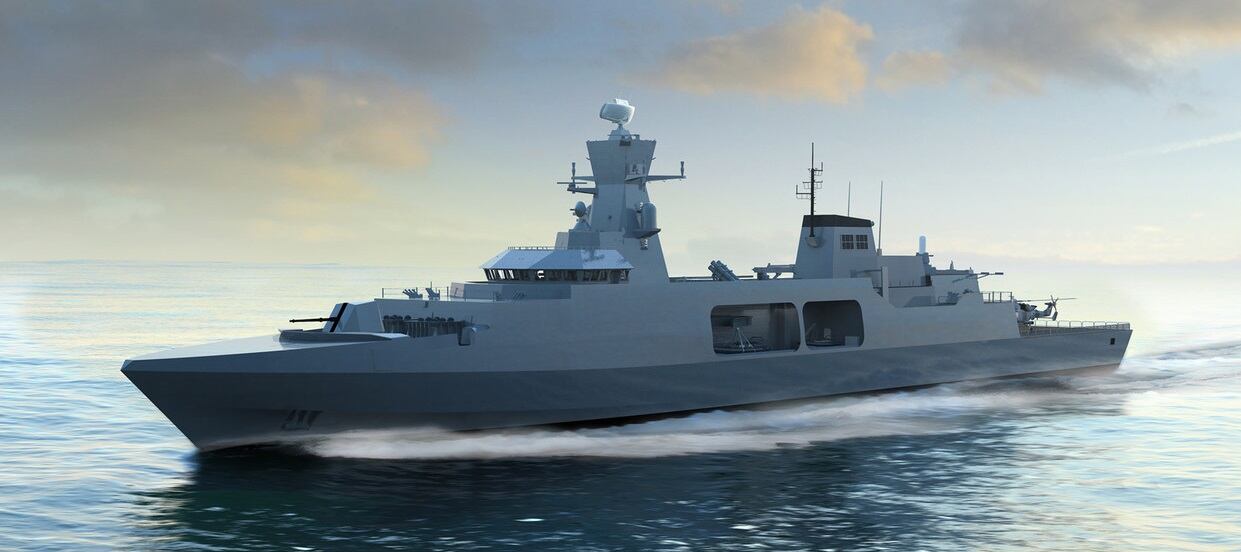
Operating Forward
Neither is the fact that the UK needs more presence in the Gulf a new realization.
The country last year commissioned its first Middle East forward base in half a century, HMS Jufair, and this Spring the frigate Montrose arrived in the region for a three-year forward deployment with rotating crews to keep it underway as much as possible.
The forward deployment model is one the U.S. uses in Rota, Spain, for ballistic missile defense in Europe, and in Japan for BMD and presence in that region.
The math is simple: For standing presence requirements overseas, you generally need four ships based in the home country. For every ship you have deployed downrange, you’ll want one in surge status if its needed for an emergency, one in deep maintenance and one training to relieve the ship on deployment.
Forward deploying a ship, especially using a rotating crew model, cuts down on the number of ships you need to maintain in your force structure to fulfill a presence requirement because you cut out transit times to the region and you cut out much of the training cycle time. In short, you get more bang for your buck.
Montrose, as of Wednesday evening, began escorting the U.K. shipping through the strait, according to a Skye New report. Montrose is scheduled to be joined by the Type 45 destroyer Duncan late this month, former British foreign secretary Jeremy Hunt said Monday.
But staging any kind of larger effort will require time to free up assets, and even with two vessels on station, at least temporarily, it will not be enough to hold down an escort mission for any real length of time, given the need for maintenance and crew rest.
And while the U.S. will more than likely, despite the rhetoric, pitch in, its surface assets are also under a great deal of pressure both from high-end missions such as defending the aircraft carriers to very restrictive ballistic missile defense missions that require the ships to be in a narrow geographic area in order to get correct geometries for shooting down missiles based on known launch sites.
The BMD mission was one of the primary drivers that led to a severe drop in readiness in the Japan-based 7th Fleet head of the disastrous summer of 2017, when twin collisions killed 17 sailors aboard the destroyers Fitzgerald and McCain.
But the roots of even those issues could reasonably trace back in part to the U.S. Navy’s own decision earlier in the decade to trade capacity for capability by decommissioning early the Oliver Hazard Perry-class frigates, which were holding down many of the Navy’s low-end missions around the globe.
The solution is not a short-term fix but a long-term one, said Hendrix, the Telemus analyst. Until the U.K. and the U.S. grown their fleet with more low-end capabilities, countries such as Iran will continue to take advantage of the vulnerability.
“The Iranians have just demonstrated that they’ve figured it out and there is no quick-fix solution,” Hendrix said. “We’ve allowed ourselves to get into this hole and it will take years to come out of it.”
RELATED
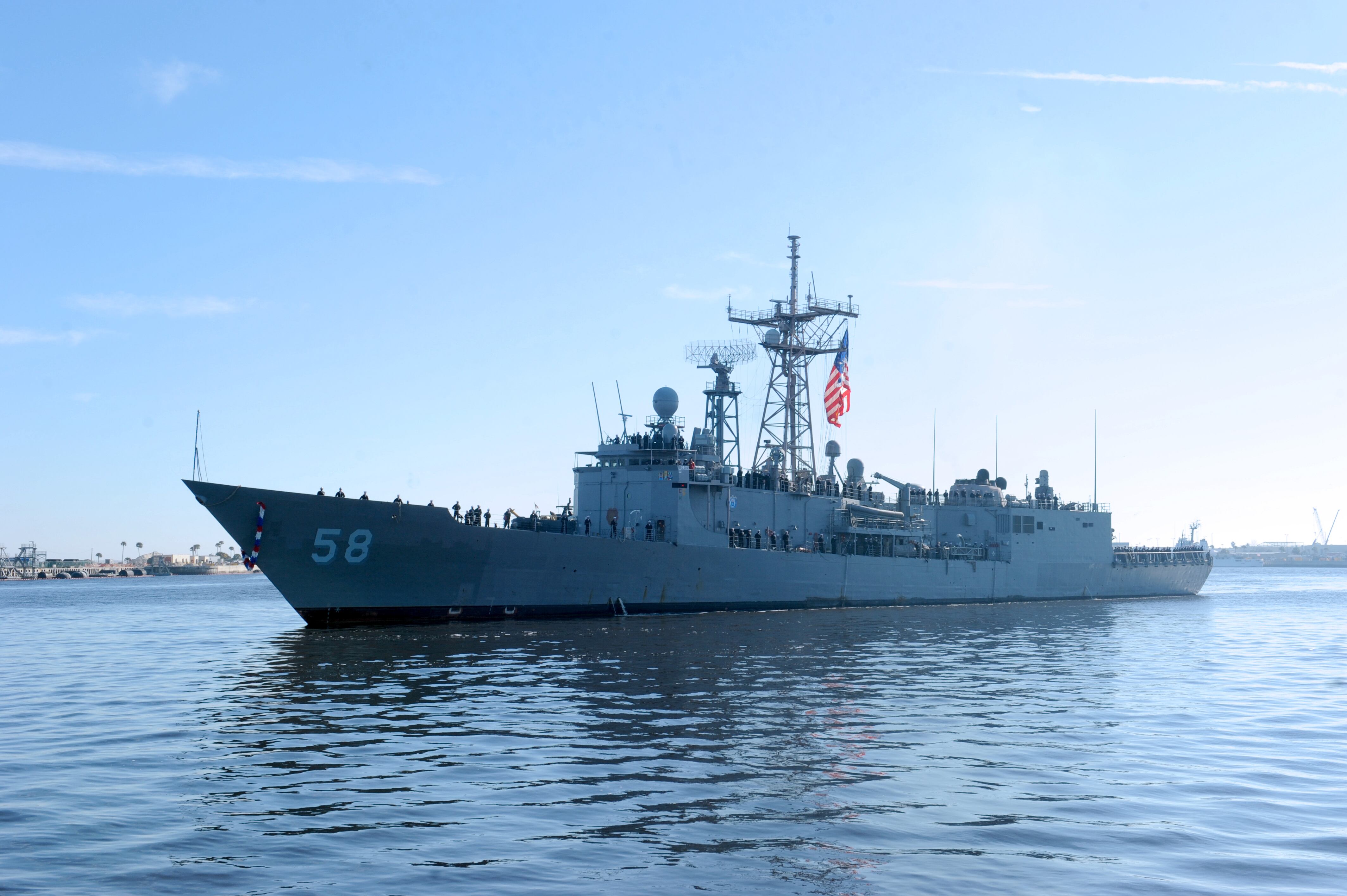
David B. Larter was the naval warfare reporter for Defense News.



